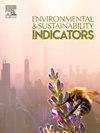暴露于城市邻里自然环境与人类健康之间的关系:多重暴露指标的系统综述
IF 5.4
Q1 ENVIRONMENTAL SCIENCES
引用次数: 0
摘要
接触城市社区的自然环境对于改善人类健康的社区干预至关重要。尽管横断面证据显示了潜在的好处,但关于如何整合更强的关联以改善自然环境的理解仍然缺乏。本文利用不同的自然暴露指标综合了纵向和实验健康证据。我们检索了三个数据库(PubMed、Scopus和Web of Science),查找到2024年6月为止发表的文章;排除了缺乏时间性的横断面研究和定性病例研究,在筛选16102份记录后选择了96项研究。自然暴露指标分为可用性、可及性、可见性和可感知性。值得注意的是,大多数研究使用植被指数和面积比例来测量可利用性,而在多维评估中,可达性通常与可利用性结合分析。最近可见性和可感知性评估有所增加,虽然不常见,但总体上揭示了与人类健康的显著积极关系。在167个关联中,81.4%与健康呈正相关,其中70.06%具有统计学显著性。在呼吸和情绪健康结果中,阴性结果的比例最高。不显著或负相关可能与缓冲区大小、自然覆盖或社会经济因素有关,并应促使未来的研究探索潜在机制和扩大卫生实践。本文章由计算机程序翻译,如有差异,请以英文原文为准。
Association between exposure to urban neighborhood natural environments and human health: A systematic review of multiple exposure indicators
Exposure to the natural environment in urban neighborhoods is essential for community interventions to improve human health. Although cross-sectional evidence suggests potential benefits, the understanding regarding how to integrate stronger associations to improve natural environments remains lacking. This article synthesized longitudinal and experimental health evidence using different nature exposure indicators. We searched three databases (PubMed, Scopus, and Web of Science) for articles published through June 2024; cross-sectional studies lacking temporality and qualitative case studies were excluded, and 96 studies were selected after screening 16102 records. Nature exposure indicators were categorized into availability, accessibility, visibility, and perceptibility. Notably, most studies measured availability using vegetation indices and area proportions, whereas accessibility was often analyzed in combination with availability in multidimensional assessments. Recent increases in visibility and perceptibility assessments, though infrequent, generally revealed significant positive relationships with human health. Among the 167 associations identified, 81.4% exhibited positive relationships with health, of which 70.06% were statistically significant. The highest percentage of negative results was observed in respiratory and emotional health outcomes. Nonsignificant or negative associations could be related to buffer size, nature coverage, or socioeconomic factors, and should prompt future research to explore underlying mechanisms and expand health practices.
求助全文
通过发布文献求助,成功后即可免费获取论文全文。
去求助
来源期刊

Environmental and Sustainability Indicators
Environmental Science-Environmental Science (miscellaneous)
CiteScore
7.80
自引率
2.30%
发文量
49
审稿时长
57 days
 求助内容:
求助内容: 应助结果提醒方式:
应助结果提醒方式:


